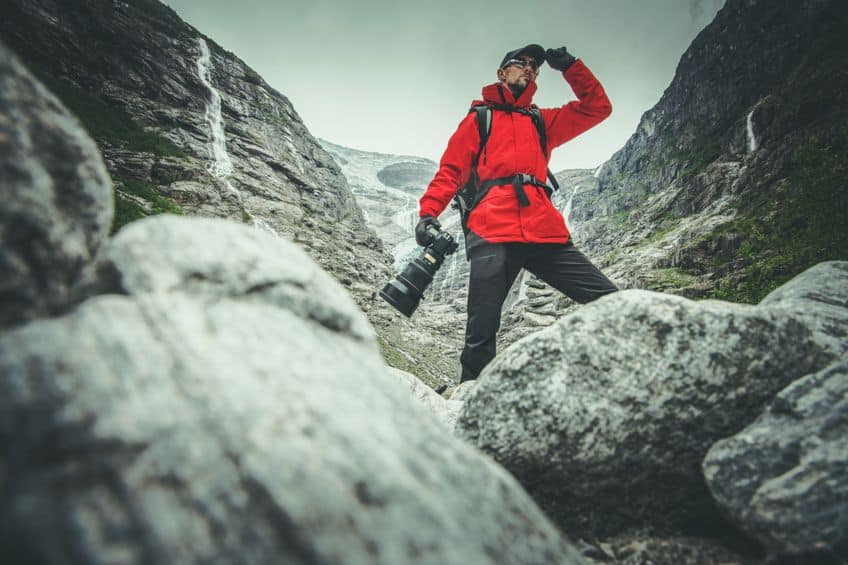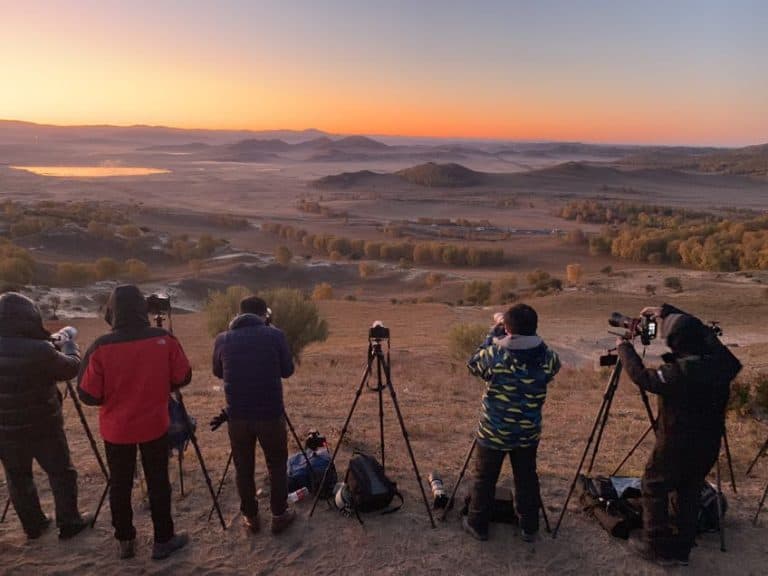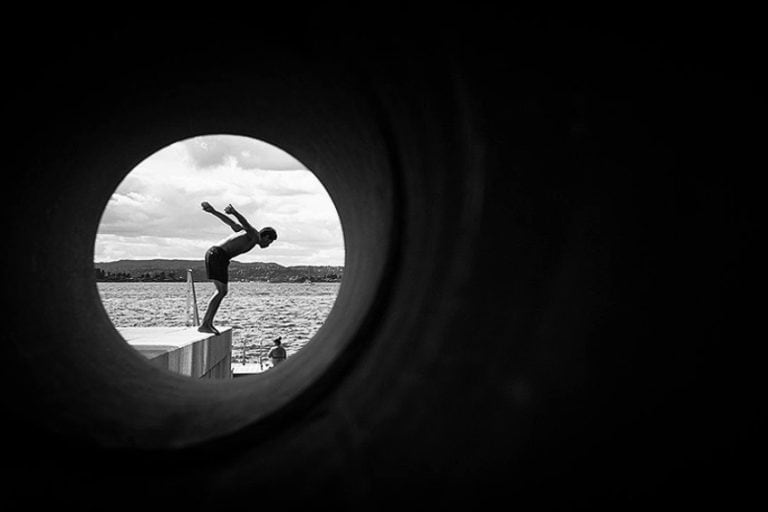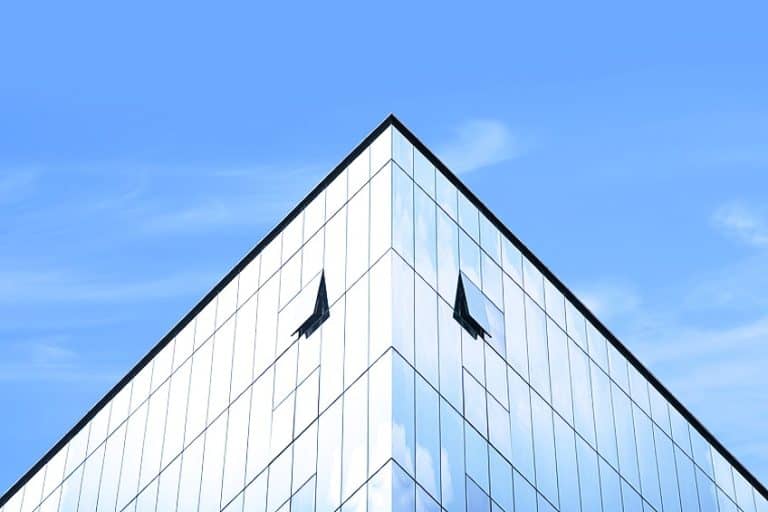Photography Terms – Photography Vocabulary Made Easy
Learning all the necessary terminology associated with a new hobby can be daunting at first, and photography terms are no exception. However, with a better understanding of photography terminology, one will better grasp how to use the various parts of a camera properly and get the best result possible. To help gain a comprehensive overview of the photography vocabulary, we have compiled some of the most important camera terms and photography words. Read on below, as we explore all the necessary photography terms that will assist you in becoming a more knowledgeable and proficient photographer!
Understanding the Important Photography Terms
No matter what level of photography you are currently in, gaining in-depth knowledge of photography terminology can only prove to be beneficial to you. All professional photographers are expected to know the relevant camera terms so that they can communicate with clients and other photographers clearly. Which photography words confuse you that you would like clarified?
Well, do not stress, we will be covering the most significant aspects of the photography vocabulary below.
Camera Terms and Anatomy
In this section, we will take a look at the various camera components and how they function. We will also explore a few different types of cameras that are most often used in modern photography. This section will also include camera terms associated with the various settings of a camera.
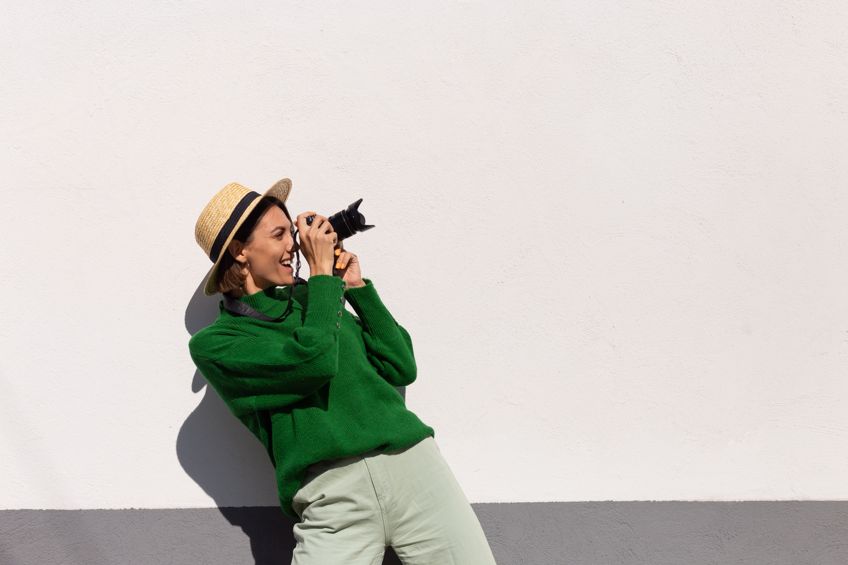
Important Camera Components
Even though there are numerous different brands and types of cameras available to the consumer on the market, we can find most of the same components and functions on all models. The lens is an essential element of a camera, serving as the camera’s eyes. The photographic process starts when light enters via the lens.
The lens can be either permanently attached to the body or can also be interchangeable. The onboard flash helps to offer a little more light in low-light circumstances.
The viewfinder is primarily used for visual purposes when taking photographs. It allows you to frame the scene and get a preview of the image before taking a snapshot. Although, in modern digital cameras, the viewfinder has been replaced by an LCD-type screen. The image sensor detects what is being photographed and transforms optical images into electronic signals, which are subsequently delivered to the memory card where they are stored.
Types of Cameras
DSLRs are a very popular choice among hobbyists and professionals due to their wide range of uses and high-quality photographs. They reflect light into the viewfinder using a mirror and optical viewfinder technology, enabling you to view precisely what the lens sees.
DSLR cameras include interchangeable lenses, which allow you to utilize multiple lenses depending on your requirements, such as telephoto, wide-angle, or macro lenses.
Mirrorless cameras are significantly lighter and smaller than DSLR models, which makes them easier to carry and use. They, like DSLRs, have interchangeable lenses and are compatible with a broad range of lens options. Mirrorless cameras excel in video recording, with several models offering 4K quality and other video functions.

Many mirrorless cameras have outstanding focusing systems with rapid and precise tracking, allowing them to capture fast-moving subjects. Point-and-shoot cameras are intended to be easy and convenient to use. They are compact, lightweight, and simple to use, making them perfect for recreational photographers and everyday purposes. Point-and-shoot cameras have fixed lenses, which means they cannot be changed.
These cameras often provide automated shooting modes, which lets users photograph without having to worry about manual settings.
Common Photography Terminology
One of the first camera terms you should understand is aperture. Simply explained, the aperture of a lens refers to the size of its opening. Consider the lens to be like a window: huge windows let more light in, whereas narrow windows allow less light in. A larger aperture will allow more light to enter into the picture for a brighter image, whereas a smaller aperture will allow less light to enter. The shutter speed of the camera is the speed at which the camera opens and shuts to permit light in and take an image.
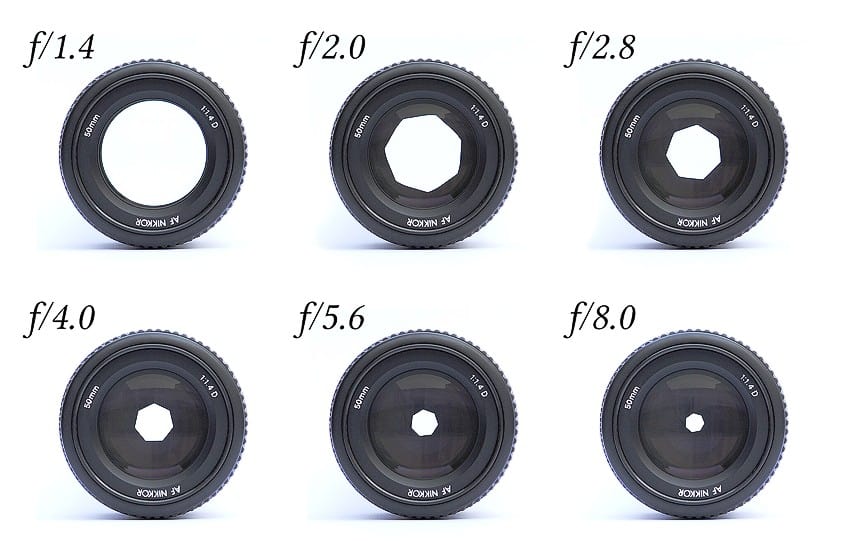
The more time that the shutter is open, the more light enters. Yet, if something moves when the shutter is open, it blurs, and if the entire camera happens to move while the shutter is open, the entire image blurs; for this reason, tripods are needed for slower shutter speeds. The ISO setting regulates the camera’s sensitivity to light. To achieve correct exposure, the ISO needs to be balanced with the shutter and aperture speed.
Types of Photography and Associated Photography Vocabulary
There are many different types of photography that you might gravitate towards and each has its own associated photography terms. These types include portrait, landscape, street photography, and wildlife.
Below, we will discuss these various types and their associated photography terminology.
Portrait Photography
Portrait photography is about so much more than just trying to capture the physical appearance of a person. It is also about trying to convey the essence of their inner character. Portrait photography is not only limited to humans but also includes taking photographs of people’s pets. Depth of field is among the photography terms associated with portrait photography. The amount of the image that is in focus is called the depth of field in photography.
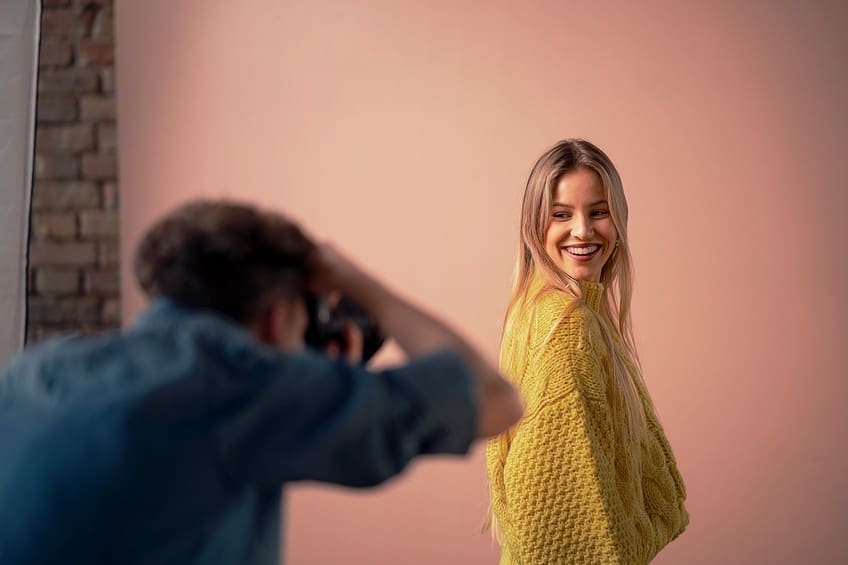
The camera will zero in on a single point, but there will be an expanse of distance both behind and in front of that point that will remain sharp – this is referred to as the depth of field. Portraits usually have a softer, blurrier background – this is known as a shallow depth of field. The focal length specifies the distance that exists between the lens and the picture that is produced on film. It also affects the magnification and viewing angle.
Landscape Photography
Landscape photography involves capturing expansive outdoor scenes, such as natural vistas, seascapes, and cityscapes. This type of photography also comprises its own set of rules and techniques. When it comes to landscape photography, the rule of thirds is a crucial compositional guideline.
Applying this rule involves dividing a picture into nine equal portions with two equally spaced vertical lines as well as two equally spaced horizontal lines. This results in a grid consisting of nine rectangles with four intersecting points.
Instead of placing important components in the frame’s center, the rule of thirds encourages photographers to arrange them along these gridlines or at the intersections. Leading lines are also compositional features in landscape photography that direct the viewer’s attention to the photo’s focal point. They are lines within the frame that serve to capture the viewer’s eye and provide a feeling of depth and perspective.
Wildlife Photography
If you enjoy spending time outdoors and are fascinated by animals and plants, then perhaps wildlife photography is the best choice for you. Wildlife photography can include taking photos of motionless objects, like flowers, to objects that are in motion, such as wild animals running across the savanna.

Tracking is the technique that involves following the motion of an object across the frame with your camera. When capturing wildlife in action, such as animals running, this approach comes in very handy. Zooming is the process of altering the focal length of your lens and is employed in wildlife photography to bring distant things closer or to isolate certain elements.
Street Photography
Street photography is a far more spontaneous and candid type of photography. It seeks to capture the sights and spirit of urban life and the people and buildings that populate it. While the photographer may not be able to control the elements to such an extent as a studio photographer would, there are certain things they can control, such as the perspective and framing of the scene.
The deliberate employment of objects within the scene to form a frame around the subject is referred to as framing.
Physical things such as entrances, arches, windows, or natural elements including trees or branches can be used to form this frame. The frame could provide context for the subject or scene and create a story about it, and it also enhances the photograph’s visual depth. The point of view or angle from which the image is taken is referred to as perspective in street photography. It influences how the topic is depicted as well as the overall visual impact of the photograph.
Technical Photography Terminology
Now that we have explored a few styles and their associated photography terms, we can look at a few technical terms. Let’s find out more about the various file formats, what white balance is, and what exposure bracketing is all about.

File Formats
RAW files include the raw data that has been recorded by the camera’s image sensor. They contain all of the data collected by the device’s sensor without any sort of compression or processing involved. These types of files preserve the full image quality and offer greater post-processing flexibility. They retain a wide variety of tones, colors, and details, which allows comprehensive manipulation without sacrificing image quality.
When compared to TIFF and RAW, JPEG is a highly compressed file. The camera processes and compresses JPEG files, deleting some of the picture’s data to minimize file size.
When applying high degrees of compression, this compression might result in a loss of image quality. TIFF is a versatile and extensively used file format that is noted for its lossless compression, which retains all of the original image’s data and quality. TIFF files are bigger than JPEG files because they keep all of the image information, resulting in greater file sizes. TIFF files are utilized in professional photography, archiving, and printing applications where picture quality and preservation are critical.
White Balance
Your eyes naturally adjust to varied light sources, but a camera cannot, which is why some images appear extremely blue or very yellow. Making what is white in real life appear white in a photograph requires using the proper white balance settings. There is also an automatic white balance setting; but, like with any automated setting, it is sometimes not completely accurate. You may select a preset based on the type of light you’re shooting in, such as sunlight or tungsten light bulbs, or you can photograph a white item and manually adjust the white balance.
Exposure Bracketing
Exposure bracketing is a photographic method that captures multiple pictures of the same subject at varying exposure settings. The goal of exposure bracketing is to guarantee that a minimum of one of the photographs has the best exposure possible under the given lighting circumstances. Three photographs are typically taken: one photo at the metered exposure, one photo underexposed, and one photo overexposed.
The exposure increments and the number of photos are usually adjustable in the camera settings.
This method is very advantageous in challenging lighting situations, such as high-contrast images with shimmering highlights and deeper shadows. High Dynamic Range (HDR) photography is one popular use of exposure bracketing. HDR is the process of combining numerous bracketed exposures into one single image with a broader dynamic range, allowing for more information in both highlighted and shadowy areas. This could potentially be accomplished with HDR-specific programs.
Metering
Employing manual mode doesn’t need to all be guesswork – a built-in light meter assists with such decisions, exhibiting if the image is over or under-exposed. Because metering is based on a median gray, having brighter or darker elements in the picture might cause the metering to be slightly wrong. Metering modes define how the meter reads light. In order to measure the light from every aspect of the scene, the camera employs matrix metering. Spot metering analyzes the light depending on where your focal point is, whereas center-weighted metering analyzes only what is in the frame’s center.

Exposure and Exposure Compensation
The brightness or darkness of a picture is determined by its exposure. Once the camera’s sensor has been exposed to a source of light, a picture begins to take shape. A darker photo is regarded as underexposed, meaning it was not exposed to enough light; a lighter shot is regarded as overexposed, meaning it had been exposed to an excessive amount of light.
Shutter speed, aperture, and ISO are all used to control the amount of exposure.
Exposure compensation tells the camera whether you want the exposure to be darker or brighter. Some automatic and semi-automated modes, such as aperture priority, support exposure correction. It is gauged in stops of light, with negative numbers producing a darker image and positive numbers producing a brighter image.
Burst Mode
When you use a camera with its normal settings, you can usually only take one photo at a time. However, if you select burst mode, the camera will keep snapping pictures until the buffer is filled or you release the shutter button. Depending on the type of camera or film camera being used, burst speeds can differ; some are faster than others, and the rate is measured in frames per second.

Lighting and Photography Terminology
Understanding natural and artificial light, as well as how they affect photos, is critical in photography. Natural light is the light emitted by the sun and the atmosphere. It changes during the day, and its characteristics may have a big impact on the feeling, colors, and overall style of your photos. Natural light direction influences the shadows, highlights, and general contrast in your photographs.
The angle of the sun may provide varying lighting effects depending on the time of day, such as gently diffused light in the morning or stronger and more dramatic light around midday.
Artificial light is any non-natural light source that is created by artificial lighting equipment. Color temperatures of artificial light sources vary, which might alter the general color cast in your photographs. Tungsten bulbs, for instance, provide a warmer yellow-orange light, but fluorescent lights tend to be colder with a bluish-green tint. LED lights provide a variety of color temperatures based on the bulbs used. Modifying the strength or distance of the light source can vary the intensity of artificial light.
Soft, Hard, and Fill Light
Soft light creates diffused, soft shadows with seamless transitions between bright and darker areas. It casts a pleasing and even light on the subject matter, reducing sharp contrasts and textural details. Soft light is often created by employing bigger light sources or diffusing materials like softboxes, umbrellas, or reflectors.
Hard light is characterized as light that casts well-defined, sharp-edged shadows. It emphasizes texture and features by creating a dramatic contrast between dark and light regions. Smaller light sources or focusing the light without dispersing it provides hard light. On a clear day, direct sunlight is a form of hard light.
A fill light refers to a secondary light source that is used to soften the shadows cast by the primary light source. It serves to balance the lighting and fill in the shadows of the scene. Fill light is often softer and less powerful than key light, producing more equal lighting and lowering visual contrast. It is possible to generate this effect by employing reflectors, diffused light sources, or reflecting light off a nearby surface. Backlighting is the practice of placing the main light source behind the subject matter, facing the camera.
This method adds a halo of light around the subject of the photograph, distinguishing it from the backdrop and creating depth.
Metadata
When it comes to image management, it’s important to understand the word metadata. The main purpose of metadata is to assist you in sorting your images by making it simpler and quicker to search for a specific image when necessary. Which types of information are included? The following are the essentials: camera settings, the time the photograph was shot, the type of camera used, and the focal length.
The bulk of this information is automatically put into the photo, but other elements, such as keywords, can be supplied afterward.
Noise
When you raise the ISO too high, you get noise. This is common in low-light situations when higher ISO values are used. Noise causes visual distortion in your digital images; the more of it there is, the more evident the granular structure of your shot will be. Before the digital era, there was an alternative to noise: film grain. Film grain is preferred over noise because it gives subtle structure without compromising image quality. It looks great with black-and-white photos.
Composition and Photography Terms
We already mentioned a few of the common photography terms regarding composition in our chapter on the various types of photography, such as the rule of thirds, leading lines, and framing. However, there are a few more that you might find very useful when it comes to better understanding composition in photography. The technique of producing a composition in which the parts are balanced and equally distributed results in a mirror-like projection or an equal distribution of the visual weight is known as symmetry.
Formal symmetrical compositions may produce an impression of stability and order in a photograph.
Asymmetrical compositions, though, can be aesthetically dynamic while producing tension or visual intrigue by positioning elements off-center. The empty spaces in a photograph that exists between or surround the primary subjects or objects are referred to as negative space. It gives the composition breathing room, accentuates the subject matter, and adds balance to your overall image.
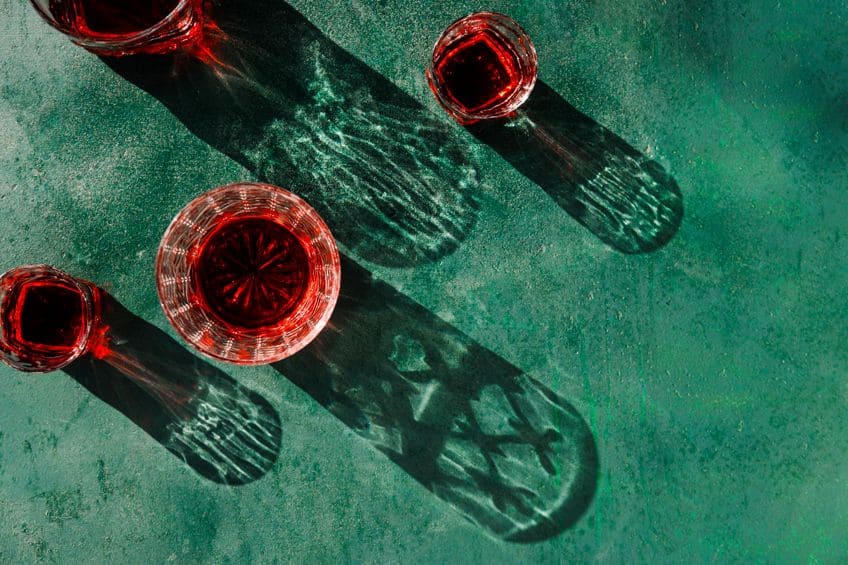
The exact location from which a photograph is taken is referred to as the point of view. It also has a significant influence on the overall composition. Experimenting with varied angles, heights, and viewpoints can often result in fascinating and unusual compositions. The Golden Ratio is a mathematical principle that has found widespread application in a variety of artistic categories, including photography. It is a compositional rule that can aid in the creation of aesthetically appealing and balanced compositions.
It entails sectioning the frame with a set of lines and points based on the Golden Ratio.
Style Photography Terms
Let’s take a look at a few terms which relate to a certain mood or style in your photography. For instance, what does bokeh mean, or blue hour? Let’s find out below.
Golden Hour
Golden hour is a time period soon after dawn or before sunset when natural lighting conditions are ideal for photography. The sunshine has a warm, golden hue and a gentler character during this time, which may enhance the visual appeal and mood of a landscape. The exact time of the golden hour changes according to the season, geographical area, and meteorological conditions. It usually happens in the first hour after dawn and the last hour before nightfall. The golden hour is very brief, lasting around an hour on average, although the light quality is best within the first 15 minutes to half an hour.

Blue Hour
The twilight period in the evening or morning when the sun is fairly low under the horizon and the sky takes on a cooler, more bluish tone is known as the blue hour. It happens to be a terrific time for photographing since, like the golden hour, it gives your images a specific atmosphere.
It can be even more wonderful than the golden hour itself in certain circumstances.
It has a hint of mystery about it, which is essential if that’s the mood you’re going for. It’s ideal for photographing objects with artificial light sources, such as bridges or historic buildings. It might also be ideal for portrait photography, as you’ll get incredibly soft, soothing light on your model’s face.
Bokeh
If your aperture values are low, you will see sections of your image that are out of focus and appear blurry. The name “bokeh” refers to the “prettiness” of this blur. Beautiful bokeh backgrounds are often desired by those of us who enjoy portrait photography. Depending on the goal, it can also be highly useful for product and wildlife photography. It’s critical to understand that bokeh is created by your lens, not your camera body. Different types of lenses have diverse designs that generate distinct bokeh effects. In general, a prime lens can provide a more pleasing bokeh effect than a zoom lens.

Dynamic Range
In photography, dynamic range refers to the difference between the brightest and darkest tones in a picture, or, pure black and pure white. The human eye is capable of perceiving a significantly wider range of tones than even the greatest digital camera.
The never-ending challenge of digital photography is to broaden this spectrum as much as possible while also continuously improving in this discipline.
When you use a larger range than your camera is capable of handling, you get dark tones with little detail (underexposed images) or bright tones with little detail (overexposed images). This is what occurs when you try to picture, say, a person sitting in the shadows against a brilliant July sky. You will either appropriately expose the individual in question or the sky, but not both.
Focus Stacking
Focus stacking is a technique used in product, macro, and landscape photography to establish a strong focus from the foreground of a shot all the way through to the background. Depth of field is determined by three factors: the aperture of your camera, the focal length of your lens, and the distance between the background and the foreground.

Focus stacking allows photographers to simulate a wide depth of field by capturing a scene numerous times, focusing on different locations, and then stacking the photos in a photo editor. This approach also allows you to photograph at any lens’s optimal aperture without compromising by utilizing a narrow aperture to keep things in focus.
Histogram
Histogram is a very important word in the field of photography. Histograms are essentially visual representations of data that display all of the tones captured on your image, ranging from pure black to pure white. Dark tones appear on the left side of the picture, while brighter tones appear on the right. In the center, there is a spectrum of mid tones that are neither too dark nor too light. You can evaluate if your shot has the proper exposure by knowing how to interpret your histogram.
If the graph touches the “ceiling” of the histogram on the left, it signifies you’ve lost information in the dark tones.
Saturation
When working with color, one of the most important photography words is saturation. It gauges the intensity of a certain color. The more intense it is, the more vibrant it seems and the more it captures the attention of the observer. Unless especially planned, increasing the saturation of all the colors in your shot is seldom a smart idea.

Choosing only one color (or a mix of two) and increasing its saturation, may be the ideal technique to provide a great color accent. Lowering the saturation values results in an image with toned down or muted colors, which can significantly alter the overall atmosphere. Complete desaturation results in a black-and-white image.
That brings our article on photography terms to a close. As you can see, there are many camera terms to master before one can get a proper understanding of what photography entails. However, with guides such as this one, it won’t be long before you have mastered the photography vocabulary. Just keep learning more about the photography words and you will be proficient in no time.
Frequently Asked Questions
Why Is It Important to Understand Photography Terms?
In order to fully grasp a new field of study, one needs to also understand the associated terms that are often used. If you wish to pursue photography as a hobby or career, then it’s also essential to know what the various photography words mean. Understanding the photographic terminology will also help you learn how to use your camera and software better.
Where Do I Learn About Camera Terms?
If you are interested in learning about the various camera terms, you can always enroll in a course at your local college, or you can find one of the many tutorials available online. Try starting with the article above to give you a decent overview of some of the terms associated with photography. If you have any further questions, you can always search for them using Google. There are also many books on the subject, many of which are available on sites such as Amazon.
Jordan Anthony is a film photographer, curator, and arts writer based in Cape Town, South Africa. Anthony schooled in Durban and graduated from the University of the Witwatersrand, Johannesburg, with a Bachelor of Art in Fine Arts. During her studies, she explored additional electives in archaeology and psychology, while focusing on themes such as healing, identity, dreams, and intuitive creation in her Contemporary art practice. She has since worked and collaborated with various professionals in the local art industry, including the KZNSA Gallery in Durban (with Strauss & Co.), Turbine Art Fair (via overheard in the gallery), and the Wits Art Museum.
Anthony’s interests include subjects and themes related to philosophy, memory, and esotericism. Her personal photography archive traces her exploration of film through abstract manipulations of color, portraiture, candid photography, and urban landscapes. Her favorite art movements include Surrealism and Fluxus, as well as art produced by ancient civilizations. Anthony’s earliest encounters with art began in childhood with a book on Salvador Dalí and imagery from old recipe books, medical books, and religious literature. She also enjoys the allure of found objects, brown noise, and constellations.
Learn more about Jordan Anthony and the Art in Context Team.
Cite this Article
Jordan, Anthony, “Photography Terms – Photography Vocabulary Made Easy.” Art in Context. August 10, 2023. URL: https://artincontext.org/photography-terms/
Anthony, J. (2023, 10 August). Photography Terms – Photography Vocabulary Made Easy. Art in Context. https://artincontext.org/photography-terms/
Anthony, Jordan. “Photography Terms – Photography Vocabulary Made Easy.” Art in Context, August 10, 2023. https://artincontext.org/photography-terms/.


